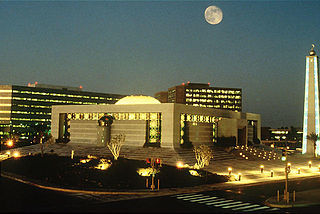
Saudi Arabia, the world’s largest crude exporter, cut pricing for March sales of its light crude oil grades to Asia, according to a person familiar with the decision.
State-owned Saudi Arabian Oil Co. lowered its official selling price for Arab Light crude to Asia by 20 cents a barrel to $1 a barrel less than the regional benchmark, according to the person, who asked not to be identified because the information isn’t public. The company, known as Saudi Aramco, was expected to widen the Arab Light grade’s discount by 40 cents a barrel to $1.20 a barrel less than the benchmark for buyers in Asia, according to the median estimate in a Bloomberg survey of seven refiners and traders in that region.
Saudi Arabia led a 2014 decision by the Organization of Petroleum Exporting Countries to maintain output amid oversupply in an effort to defend market share and drive out higher-cost producers. The country’s average production in 2015 of 10.2 million barrels a day accounted for more than 10 percent of global oil supply, according to the International Energy Agency.
Benchmark Brent crude dropped 35 percent last year and another 6.8 percent in January. Saudi Aramco officials have said prices will rise by the end of this year as demand grows.
“The gap between supply and demand has started shrinking,” Aramco Chief Executive Officer Amin Nasser said at a Jan. 26 conference in Riyadh. “We will see some adjustment, but it will happen toward the end of this year.”
Aramco cut the premium for Arab Extra Light crude to Asia by 40 cents a barrel to $1.30 a barrel more than the benchmark, according to the person. The company narrowed the discount for March sales of its Medium and Heavy grades to Asia, the person said.
Saudi Arabia boosted output to a record 10.48 million barrels a day in June, according to the International Energy Agency, and pumped 10.2 million a day last month, data compiled by Bloomberg show. OPEC, of which Saudi Arabia is the largest producer, abandoned its oil-production target in December.
Middle Eastern producers are competing increasingly with cargoes from Latin America, North Africa and Russia for buyers in Asia, its largest market. Producers in the Persian Gulf region sell mostly under long-term contracts to refiners. Most of the Gulf’s state oil companies price their crude at a premium or discount to a benchmark. For Asia the benchmark is the average of Oman and Dubai oil grades.